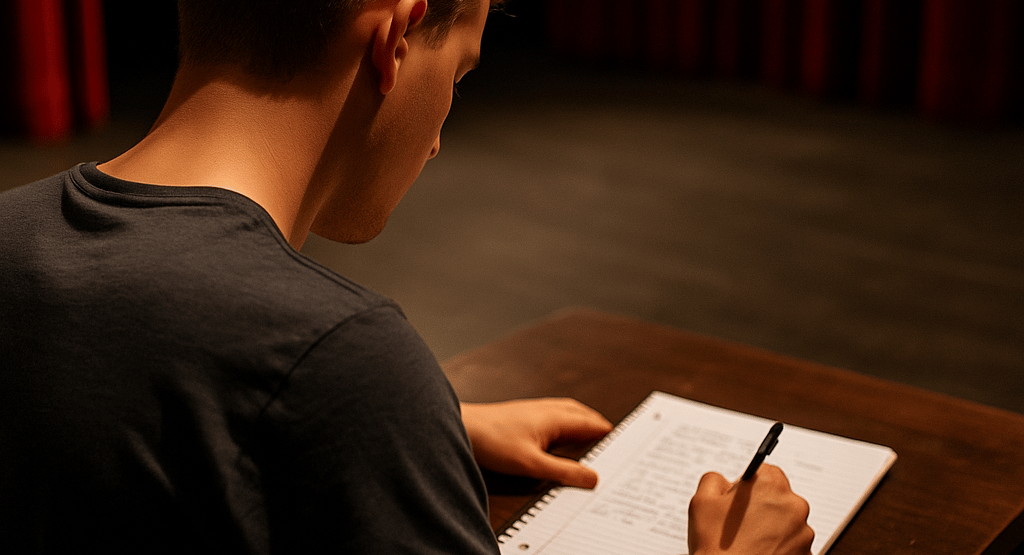Teaching Playwriting
5 Tips for Getting Your Students Actively Involved and Loving the Playwriting Process
DRAMA TEACHER RESOURCESTHEATRE STUDENT RESOURCES
Katie Zakkak
7/3/20252 min read


One of my favorite units to teach as a drama teacher is the playwriting unit. Whether you're teaching middle school or high school, whether you're in a drama class or even in an English class, introducing playwriting is a fantastic way to get students thinking creatively, writing differently, and collaborating in powerful ways.
In fact, I’ve even used this unit as the foundation for a full-semester advanced drama project, where students write, produce, and perform their own original play. If you're curious about how to implement this in your classroom, here are my five go-to tips to make the process exciting, engaging, and successful.
✏️ 1. Start with Characters First
Characters are your play’s driving force. If your students can create compelling characters, the rest will follow.
Begin with physical-based exercises to inspire character creation.
One of my favorite exercises: Wax Museum Characters
→ Partners pose each other in frozen positions.
→ The student in the frozen position writes a character description based on how they’re posed.
→ This helps students discover character traits through movement and shape.
🔑 Tip: Physical prompts unlock creativity in a way that writing prompts alone often don’t. Start here—it works!
💡 2. Find Interesting Scenarios
A strong scenario gives characters something to work with—and audiences something to care about.
Encourage students to brainstorm:
“What if?” situations (ex: What if two ex-best friends are forced to work together again?)
Time-based tension (ex: A conversation during a fire drill that changes everything)
School or current world topics they’re passionate about
Ask: What would make you want to keep writing this story?
⏳ 3. Keep It Short & Contained
Especially for new playwrights, limit scope for greater success.
Recommend a single location (one set)
Set the play in a short time frame (minutes or a few hours, not days or years)
Avoid scripts that bounce around in time or place too often
🎭 Reminder: A play is not a movie. Help students understand that the stage is live and present, and scenes need to be manageable and realistic for a school production.
👀 4. Show, Don’t Tell
Once the characters and setting are in place, students should focus on stage action and subtext—not just dialogue that over-explains.
Tips to help students “show” more effectively:
Use clear stage directions that add meaning to what’s happening.
Avoid exposition dumps (long monologues explaining the plot).
Let characters talk about something they know—but the audience doesn’t.
→ This builds suspense, tension, and realism.
🗣 Example: Instead of a character saying “Remember when Mom kicked us out?” …
Try: “So, you really think locking the door’s going to make it stop this time?”
📖 5. Read Drafts Out Loud
Hearing a script aloud is one of the most powerful steps in the process.
Organize a staged reading day in class once drafts are complete.
Have classmates read each other’s work out loud.
Encourage peer feedback and revisions after readings.
This gives playwrights the chance to hear pacing, dialogue, and emotional rhythm—things they often can’t catch while silently writing.
🌟 Bonus Resource
I’ve created a full Playwriting Unit that walks through all of this step-by-step, including lesson plans, character-building exercises, worksheets, and more. It’s available in my TPT store, and it’s the same unit I’ve used with success in my own classrooms.
If you’d like access other helpful tools, sign up for my Drama Teacher Toolkit Freebie. You’ll get added to my newsletter with regular drama teaching tips, ideas, and resources.
Final Thoughts
Playwriting gives students a voice. It allows them to tell their own stories in a creative, collaborative, and performance-ready way. With just a few strategic steps—and a lot of encouragement—you’ll have your students excited to write and proud to perform.
Happy teaching, and break a leg!
